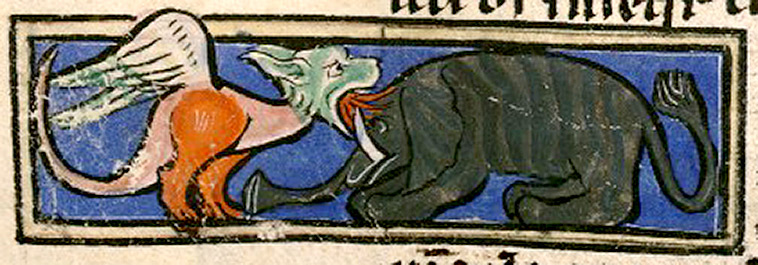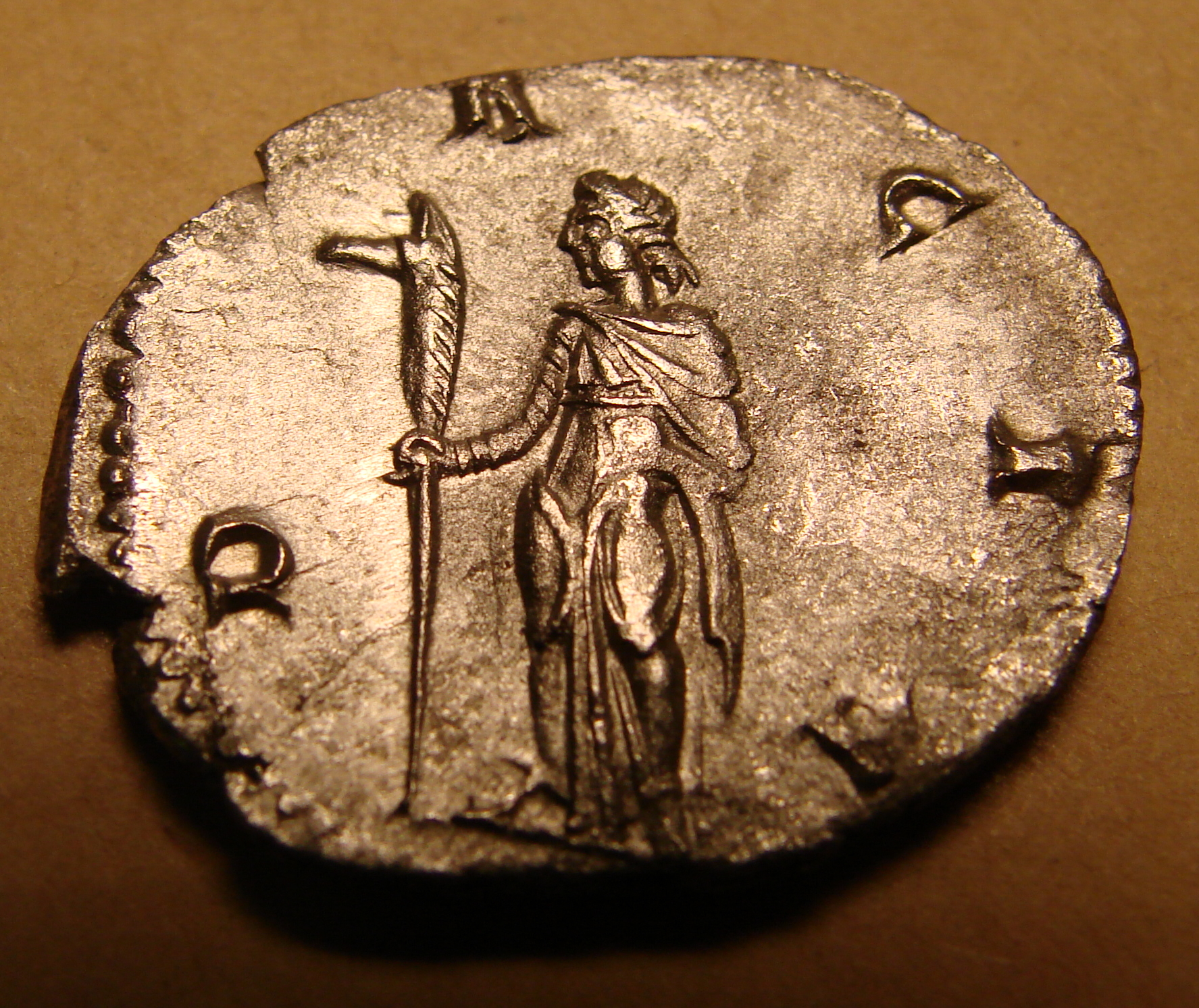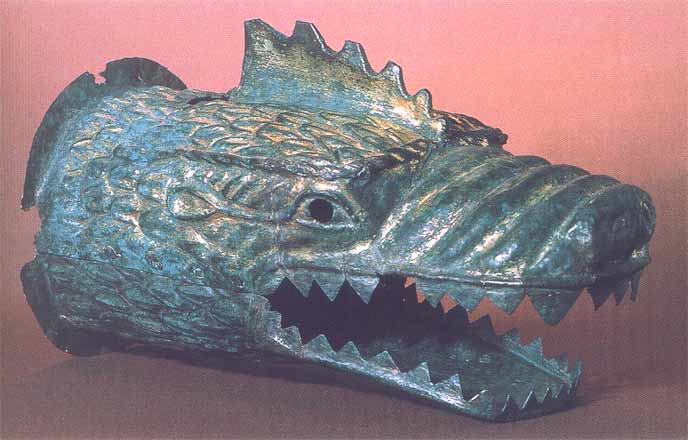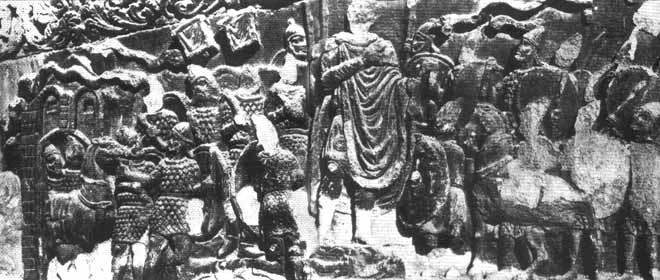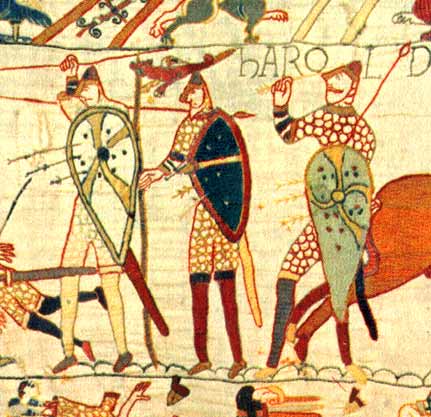Compare the ‘evolution’ of the Draco dragon extent in various medieval bestiaries in the Latin language.
A reallife image of an African rock python killing a baby impala.
A python killed an elephant! This is the ancient (Greek) version of a modern ‘animal attack’ video. Somebody somewhere witnessed a python kill a (baby?) elephant. A rare and amazing incident and reported it. The idea became an ancient ‘urban legend’ and a virulent ‘meme’. A kind of snake that can even kill elephants!
Some bestiaries mention the python will fall down from a tree on top of an elephant. Most medieval Europeans have never seen a python. Or an elephant. Hopping down from a treetop also encouraged the assumption that this kind of snake might be birdlike, with wings, flying among tree branches, and eaglelike landing to catch its prey.
Above, the birdlike wings are grabbing under the foreleg of the elephant. But the original concept of a snake is clear.
Other bestiaries simply mention the python ‘on the path’ of the elephant, and tangles its feet, to take it down. Other bestiaries mention the python going after a newborn elephant, while the parents defend it.
In the manuscript above, note the wolflike head with ears. By the Medieval Period, the Roman military Draco banner is already firmly implanted in the popular imagination of what a ‘Draco’ looks like. So various kinds of heads are already possible.
These Pan-European bestiary manuscripts were part of the Roman then Holy Roman Empire. The earlier ones are text-only in Latin. But later, the medieval illuminated manuscripts tried to illustrate them with a picture of each animal, ... as best as the artist was able.
The texts of most of these bestiaries interpreted these animals allegorically and religiously. The description for the Draco python entry added an allegory that compared it to the Christian devil. The elephant then is a careless Christian who is unaware of the machinations of the devil. The devil entraps the elephant Christian in sin. Meanwhile, the ‘Draco’ from the Vulgate Latin Bible, is a ‘snake’, a ‘serpent’, apparently flying in the heavens like angels do, a ‘fowl’ of the air, a ‘roaming lion’, a ‘wolf in sheeps clothing’, and so on, conflating various possibilities for what the African python looks like.
Note the Draco python above has a lionlike head. Or at least more catlike. The artist has seen a reallife cat. A lion is said to be something like it. The winged body is interpreted as if more birdlike.
Regarding the elephant. Since few have ever seen a reallife elephant, the bestiary manuscript traditions tend to portray the tusks of the elephant growing upward from the lower jaw. This is a guess about which teeth the ‘oliphant horns’ come from. At least this artist has a reasonably accurate understanding of the large ears.
This snake has a wolfhead, like the Roman cavalry banner sometimes does.
Note, the above medieval European artist has never actually seen a reallife African elephant nor a reallife African rock python, nor even ever seen a decent bestiary that depicted either of these.
Even so, the head of the snake seems an attempt at lionlike, somewhat like a domestic cat.
Either the elephant is pretty small, or the python is pretty big.
This Draco ‘serpent’ has venom. The venom is painful, burns, and causes redness and inflamation ... like fire.
Note the humanlike (?) head. With eyebrows. But the elephants also have eyebrows. Future bestiaries with a human-headed Draco python, have precedents.
The ‘Draco’ python above has a lionlike (?) head. The artist might be splitting the difference between seeing bestiaries with a lionlike head and bestiaries with a wolflike one. So compromised.
Similarly, the artist might have seen an image with a naturalistic python snake, or thought about how snakes dont normally have legs, yet saw a bestiary where the Draco was more birdlike with wings. So compromised. No legs but birdlike.
A respectably accurate elephant − this artist has connections!
This artist has never seen an elephant. But at least everybody knows, this is what a python looks like.






